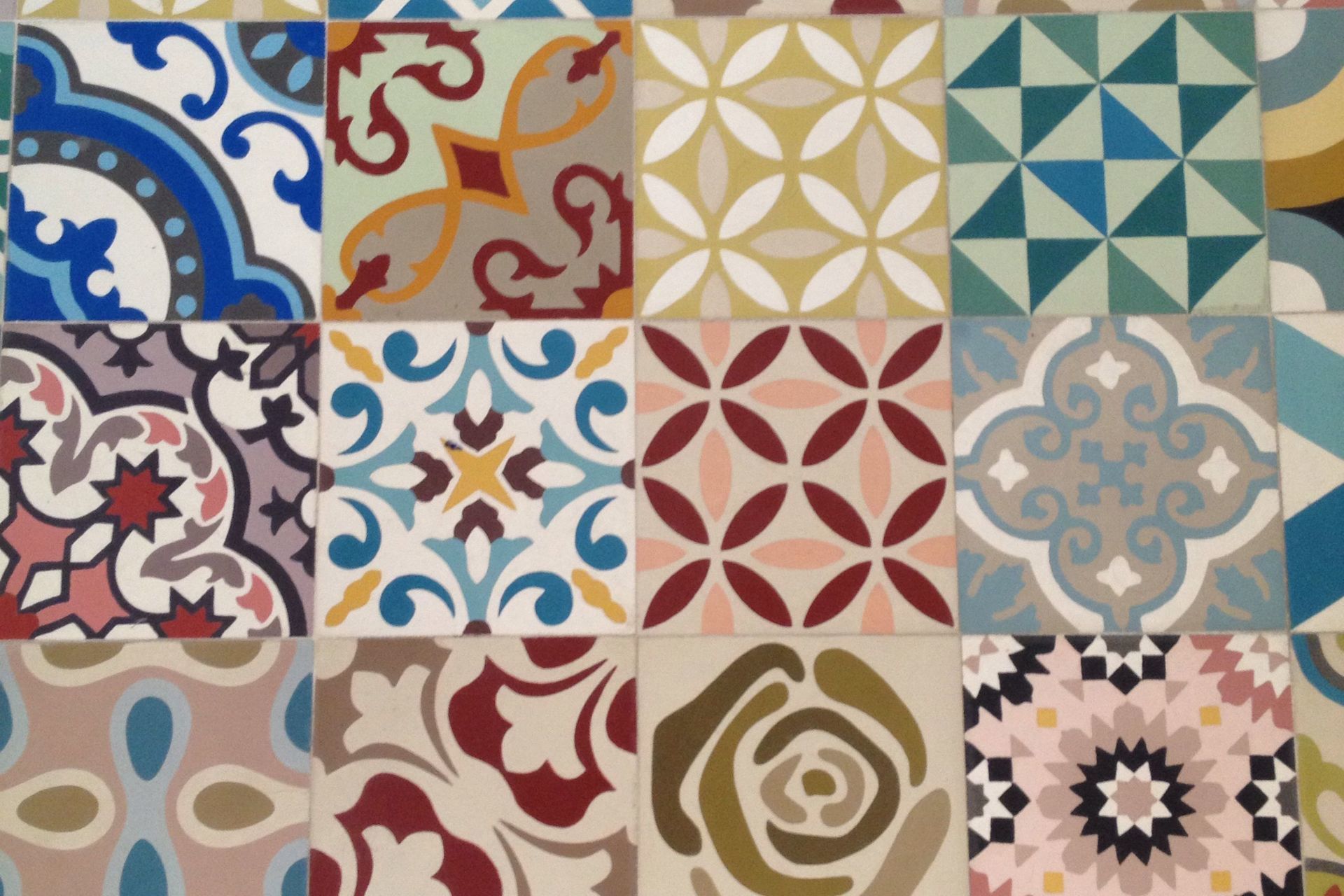
If there is any excess grout, remove it immediately using a damp cloth. Do not put grout above the level of the tiles. Use a spatula to fill the spaces between the tiles. The pigments could leave irreversible stains in the slab.

Before grouting apply an impregnating sealant to the tiles, this is so that the grout residues do not get deeply adhered to the tiles’ layer of pigments and these can be removed easily. The sealer will dry after two hours, but will take a further three days to become fully resistant. The aim is to completely fill the substrate with sealer without over applying it.
#HANDMADE CONCRETE TILES FREE#
After one hour rub over the surface with a soft fluff free cloth to obtain a uniform finish and remove any excess sealer. This product should be generously applied. During the installation phase before grouting, apply an impregnating sealant (Fila MP90 Eco Xtreme) to the tiles with a soft cloth or brush. Treatment For all of the treatments of cement tiles at Naturally Of Earth we recommend Fila products: 1. When the installation is finished and the adhesive is dry, clean the surface with plenty of water to remove the thin layer of pigmented powder that covers the tiles. The separation between tiles should be minimal, 1 to 2 mm, respecting the alignment for a good finish of the drawing. The precision is required, as the tiles cannot be polished down like other materials.


The tiles need to be placed manually, one by one, without using a hammer or any other tool. When the layer is dry, spread the tile adhesive on the back of the tile and the floor using the rake comb with fine tooth spacing (double spread of adhesive, also called “buttering”), in order to improve adhesion and prevent creating any empty spaces that may result in unsticking of the slab in the future. In that way we will avoid having breakage problems due to structural movements of the building. Leaving a space between the end of the floor and the wall is recommended, just enough so that the skirting covers this small space. It is important that the surface where you place the tiles is completely dry, otherwise the moisture will evaporate through the tiles, leading to composition of saltpetre deposits in form of white stains. The tiles need to be placed on a perfectly levelled and clean surface, therefore prepare the concrete slab before and let it dry completely before placing the cement tiles. The installation of cement tiles is a simple and quick process. PLEASE NOTE TO ORDER A FREE SAMPLE JUST CONTACT US WITH YOUR ADDRESS AND CONTACT DETAILS. Over time, new processes evolved and the beginning of the encaustic, or inlaid tile, began.Ĭreate a modern interpretation of this classic, vintage design for contrast and a statement room resulting in class and pure sophistication. This process was very time-consuming and tedious.

Many 13thcentury and earlier churches and palaces incorporated the use of tile made of various shapes and interlocked them to form a mosaic-like design. While many consider encaustic tiles to be the most traditional tile, they aren’t the first. Encaustic tiles might have been around since the 12th century, but they’re coming back in a big way and are currently taking the hottest homes by storm.įrom palaces to palazzos, and from restaurants to chic, residential homes, these tiles are having their moment – and for good reason.


 0 kommentar(er)
0 kommentar(er)
